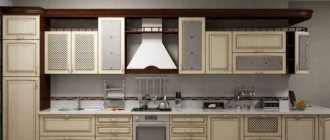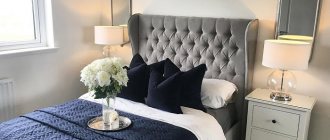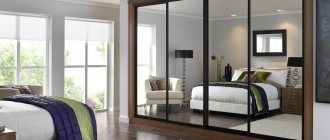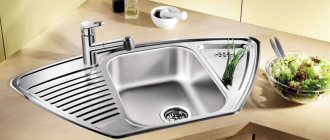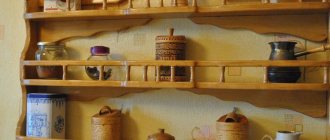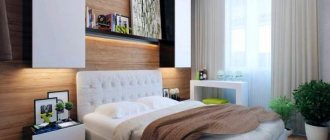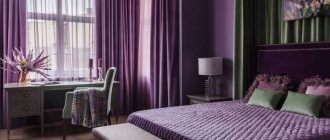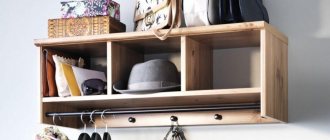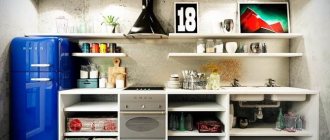Living room. Hidden gadgets
Numerous devices that surround us everywhere do not always decorate the room. If you want to take a break from them, you should find a special place that hides them. In a small apartment, a variety of electronic devices overload the decor, and to disguise them, you can design a special drawer or drop-down drawer.
An outlet hidden inside will allow you to charge gadgets without spoiling the look of the room.
Our hands are not for boredom
The question of how to close a closet from a child is very relevant in the first years of a baby’s life. Actively exploring the world, he strives to get everywhere, see how the furniture is arranged and what is stored inside. And it’s good if the consequence of this is simply a disaster that the mother (already exhausted by lack of time and constant care for the child) will have to fix, but the baby can get injured and then everything will become much more serious. In the old days, our parents used a variety of tricks: they wrapped the cabinet handles with wire, sealed them with electrical tape, tied ropes... These methods were not always effective, but the hassle for adults became much greater: try untying a complex knot if you urgently needed something lying inside !
Fortunately, the situation is much better now. There are many special latches and locks that do not leave marks on furniture, are easy to open, but are not subject to small hands.
- U-shaped latch Slides over the handles and locks into place. A special comb prevents opening by force.
- Locks Ideal for drawers. They can be completely different, but the main principle is the same: one part is attached to a fixed wall, the second - to the facade. If necessary, they can be easily opened.
- Locks Plastic and rubber, they are installed on swing doors, are usually inexpensive, and protect well.
- “Butterfly” Designed for sliding wardrobes. If the wings are straightened, then the doors move without difficulty, but if you lift them up with a simple press, then it becomes impossible to move them.
There are also special locks for windows, stickers for sharp corners, plugs for sockets, locks for interior doors - in a word, everything to make the apartment safe for a person just starting to live.
Kitchen. Hidden shelves and drawers
In a kitchen, especially a compact one, most appliances should be kept in closed cabinets: this way less dust accumulates on them, and the environment seems tidier. We recommend using every centimeter to make the most ergonomic use of the area.
You can create a separate “garage” for household appliances by using part of the countertop - it will not be visible behind the facades.
For small appliances, spices, bags, bottles and jars, it is worth setting aside a drawer in a narrow partition: the space involved here is small, but the benefits from it are great. Don't forget about plinths: this is an excellent option for storing trays, baking sheets and lids.
Fill bedroom corners to save space
Usually the corners of rooms take up a lot of space that is not used in any way. You can buy a corner wardrobe to make the most practical use of your bedroom space. A corner wardrobe is a beautiful piece of furniture, but stores rarely have suitable sizes and fronts, which means you will have to order an individual model. The problem is that custom-made furniture costs more than ready-made models in furniture stores. These disadvantages do not seem insignificant when you need to fit a wardrobe, bed, chest of drawers and dressing table in a tiny bedroom.
Photo:
Kitchen. Roomy seats
Hidden storage can also be organized in the dining area if you use unusual seats instead of chairs and stools: a special bench with a lifting lid or a furniture corner. Wooden boxes would be appropriate in a loft style. And if you strive for originality, place a chest in the kitchen and cover it with a soft pillow.
Save the most valuable: 10 ideas for hiding places in furniture
Despite the fact that today most of our valuables and secrets are stored on a bank card and on password-protected sections of computers, sometimes at home we need a real hiding place for small but important things: grandmother’s jewelry, very personal papers, a large amount of cash, in the end , an emergency supply of chocolate. Let's see what professional designers and craftsmen offer us.
Designer Yi-Ting Ching managed to create just exemplary hiding places for his Secret Stash project. Hollow, but solid-looking wooden furniture parts, as well as a milk glass under which you can hide keys, and a lamp for storing money - a complete set of secret places for all occasions.
Another example of great design is the Hide stool from Swedish designer ove Greitz. To open the cache, you need to solve the puzzle by moving the wooden panels in the correct sequence.
The Japanese studio Torafu Architects came up with an elegant solution. The Clopen Shelf contains a secret drawer that can only be opened using special magnetic handles. Magnets can be carried in your bag or used as key rings.
The shelf, created by designer Daniel Schofield, has a simpler design. On the one hand, the hiding place seems less reliable, but on the other hand, there are no seams or cracks on the visible surfaces of the shelf that could indicate its hidden essence.
Our favorite idea in this collection is a drawer within a drawer. It reminds you of fairy tales and palace secrets at the same time. True, the box is so tiny that you can only put the key to a more spacious storage room there.
The table created by designer Max Lamb for Benchmark doesn't pretend to be a piece of furniture with real secret storage, but the hidden compartment can be disguised simply by covering it with a tablecloth.
Fresh design ideas are good, but they do not negate the dignity of the classics. What is a classic cache? That's right, a box with a double bottom. In order to create it, you do not need to have special carpentry talents, a good master class is enough.
You can store important things in the bedroom, but not under the mattress. A hollow bedpost, for example, would be better suited for this.
Or its headboard, as offered by Secret compartment furniture, which manually creates pieces of furniture with secret compartments.
So, hiding places can be made everywhere. Let us list once again the most accessible options.
In boxes.
We hardly use the space in the back of dresser drawers and desks, so you can create a hiding place there by making a double wall. Remember that the smaller our secret compartment, the more difficult it is to notice. Another option is to make a double bottom. If it is not made of plywood, but of thick material, you can cut a recess in it and cover it with a second, thin and durable layer. Then the cache will be almost impossible to detect.
In the closets.
A hiding place can be arranged in the space between the floor and the bottom shelf of the closet. If it is impossible to remove the “plinth” panel in order to simply put valuables under the cabinet, sacrifice the integrity of the bottom: you can carefully cut out a “hatch” in it, which will provide access to the space near the floor. Build a box according to the size of the hole and the height of the gap between the bottom of the cabinet and the floor, and try to make the hatch itself as inconspicuous as possible.
Cushioned furniture.
A hidden zipper in the seam of upholstery or pillows allows you to temporarily hide small valuables in the furniture. If you want to feel like the hero of the movie “12 Chairs,” just sew valuables under the fabric. The main thing is to choose threads that match and make sure that the chairs or sofa are not accidentally sold or thrown away.
Add to favorites5
- Tags
- storage
storage
Bedroom. Shelves inside the headboard
If you don’t want to fill the space under the bed, you can use a headboard: both ready-made designs with built-in drawers and free-standing narrow cabinets are sold. It is very convenient to store things in special compartments - they do not gather dust and are always at hand.
In addition to books, you can store night cream, small decorative pillows, a change of bed linen or a blanket inside.
Build the cabinet into a special recess
Many apartments have ready-made recesses that can be used to place a wardrobe. It will most likely have to be made to order according to individual parameters. Such a wardrobe will cost a little more, but it has the opportunity to save precious space in your bedroom. You can decorate the storage room as a wardrobe and divide it into compartments for clothes. Storerooms are most often located next to the bedroom, which is very convenient in small apartments.
Photo:
Bathroom. Hidden shelves
Often the space under the bathroom is undeservedly empty, but a functional screen can easily unload cabinets and open shelves, hiding household items. You can order the design from craftsmen, make it yourself, or purchase a ready-made screen-cabinet with sliding doors.
It is important that the ventilation in the bathroom is working properly and that dampness does not accumulate in the room, otherwise storage under the bathroom will become impossible.
Buy a folding bed-wardrobe
In Europe, furniture that can be transformed is especially popular. We should also pay attention to these multifunctional and practical models. So, for a small bedroom you can purchase a folding bed-wardrobe. When you sleep, the structure serves as a comfortable bed for you, and when you wake up and fold the bed into the wall, it turns into a closet for your necessary things. Such unusual furniture is very comfortable, saves space as much as possible, but its downside is that over time you may get tired of constantly cleaning the bed in the morning, although there is nothing difficult about it.
Photo:
Hidden household items
A variety of household aids (ironing board, clothes dryer, vacuum cleaner and mop) do not decorate any interior. Hidden storage systems are also useful in these cases:
- for the ironing board, a special shallow cabinet masquerading as a tall mirror is successfully used,
- and instead of a free-standing dryer, a built-in dryer is often used: wall-mounted or in the form of a drawer.
Mirrors
How chic the cabinets look, the fronts of which are completely mirrored! They solve many problems:
- They help hide the closet in the interior. Behind the mirrors, even if they have decorations, few will notice the closet, if only because guests (and you yourself) will admire their reflection.
- Expand the space. Mirrored facades give the room additional depth.
- Increase the amount of light. To do this, install a mirrored cabinet so that its doors reflect daylight.
- Solve problems with mirrors in the room. There is no need to think about where to hang a mirror so that you can see yourself in full height.
The mirror cabinet can be hinged, and the mirrors can have a chamfer, a pattern, and they can also be painted. There is room for imagination to run wild!
Materials for assembling a simple bedside table
To assemble furniture according to the project I developed, I needed the following:
- Set for creating hidden connections.
- Wooden dowels with a diameter of 1 cm, connected in 5 pieces.
- Wood glue.
- Clamps.
- Electric drill.
- Pull-out guides for a 25 cm long drawer.
- Metal hinges for the top cover.
- Clamp.
Below I list the main steps for building a nightstand.
Table stand
The stand is assembled from six side walls. They are made of 15 mm thick MDF and are veneered on the outside with radially sawn maple veneer. The vertical edges of the walls are sawn at an angle of 60 degrees. Having temporarily assembled all six walls, the master determined the dimensions of the upper and lower supports so that they would fit accurately into the rack. The supports are made of MDF. They have holes drilled and countersunk for screws.
Then the master cleaned the inner surfaces of the walls, sealed the joints, coated them with wax and polished them. The stand - walls and supports - are assembled with glue using window clamps and clamps for picture frames. There is no need to glue one of the walls, which should become a door.
When the glue hardened, the master removed the door - and there were five walls attached to hexagonal bases. Using a hand plane, he chamfered it to create a 4mm wide edge. I glued strips of tulip edging to them with PVA glue and pressed them with adhesive tape until the glue dried.
